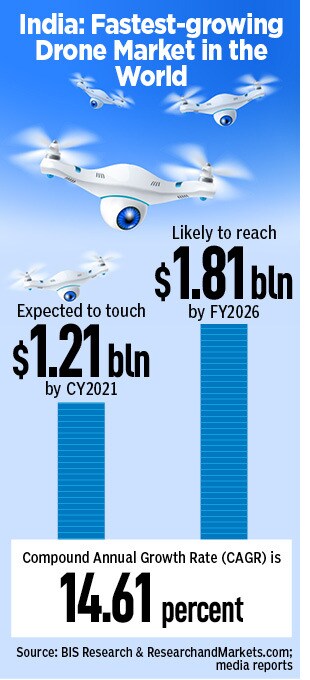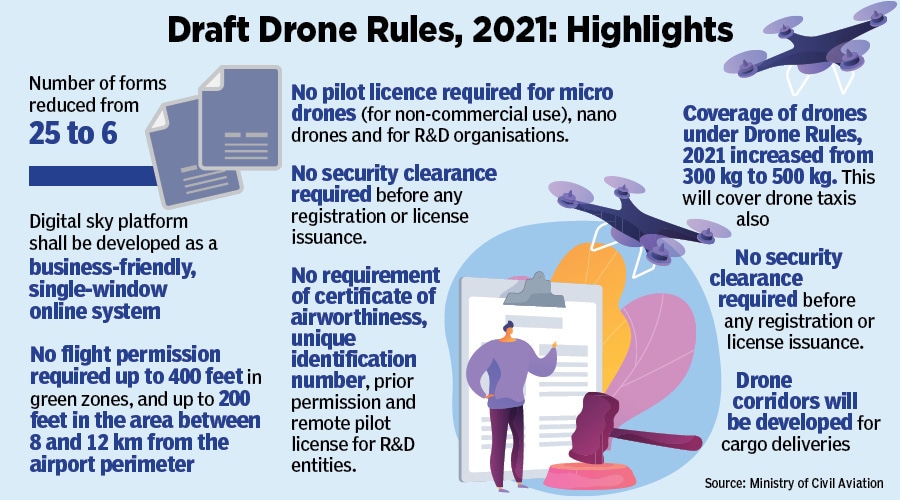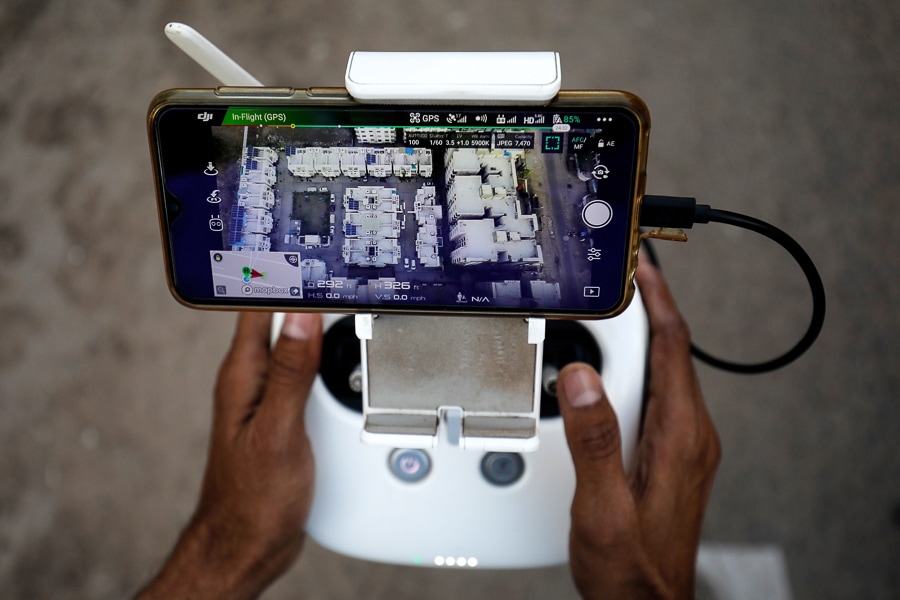
Drone Rules, 2021: What it means for India's drone technology sector
The government has recently notified a liberalised set of regulations for unmanned aircraft systems, attracting interest from startups and investors. How significant is this likely to be and what more needs to be done?
 Chandigarh Municipal Corporation use a drone to sanitise the Grain Market area during the lockdown; Image: Keshav Singh/Hindustan Times via Getty Images
Chandigarh Municipal Corporation use a drone to sanitise the Grain Market area during the lockdown; Image: Keshav Singh/Hindustan Times via Getty Images
In August, the Ministry of Civil Aviation notified the updated Drone Rules 2021, replacing the highly critiqued Unmanned Aircraft System [UAS] Rules, 2021, released on March 12 this year. With these liberalised Drone Rules, “our aim is to make India global drone hub by 2030”, said Jyotiraditya Scindia, union civil aviation minister. According to news reports, currently there are 150-200 startups in India that are part of the drone ecosystem, with drone taxis likely to be launched soon.
While drones have been around for a while, it is only in the wake of the Covid-19 pandemic that its use in various sectors has been explored. In April-May 2020, drones were being used to sanitise localities, make announcements and for continuous monitoring of areas to ensure that lockdowns were being properly enforced. "Essentially, drones moved from being a 'good-to-have' to a 'must-have' technology," says Ankit Mehta, co-founder, ideaForge, who started working on drones back in 2004, when he was studying in the Indian Institute of Technology (IIT) Bombay.
 According to BIS Research, the drone market in India is expected to reach $1.21 billion (Rs 8,911 crore) in CY2021. It is likely to touch $1.81 billion (Rs 13,330 crore) by FY2026 growing at a compound annual growth rate (CAGR) of 14.61 percent, as per news reports.
According to BIS Research, the drone market in India is expected to reach $1.21 billion (Rs 8,911 crore) in CY2021. It is likely to touch $1.81 billion (Rs 13,330 crore) by FY2026 growing at a compound annual growth rate (CAGR) of 14.61 percent, as per news reports.
The new rules are expected to only accelerate this growth.
These new Rules, therefore, have resulted in a lot of excitement, not just for drone startups, but also for investors. In 10 to 12 days after the new Rules were announced in August, the sector saw several investments. Drone delivery startup TechEagle raised $500,000 (Rs 3.6 crore) from India Accelerator, Vinners Group, Sitics Logistics, and angel investors. Skylark Drones raised $3 million (Rs 22 crore) in a Pre-series A funding round, co-led by investors InfoEdge Ventures and IAN Fund, with participation from AdvantEdge Founders, Fowler Westrup, Redstart Labs, IKP and Vimson Group. "Investors that were sitting on the sides almost finalising the investment, but not taking the final call, have all on a lightning speed closed funding deals in drone startups after the Rules were announced," says Smit Shah, director, Drone Federation of India.











